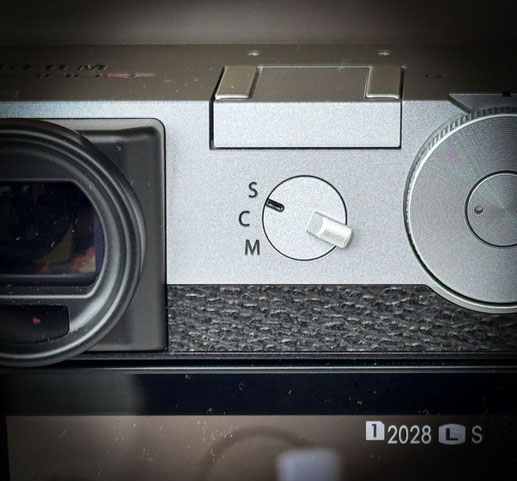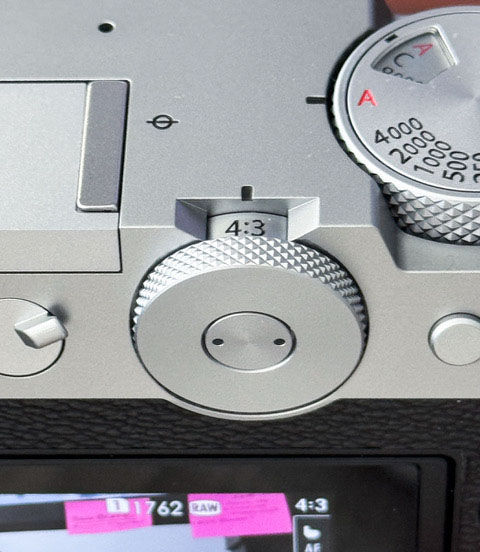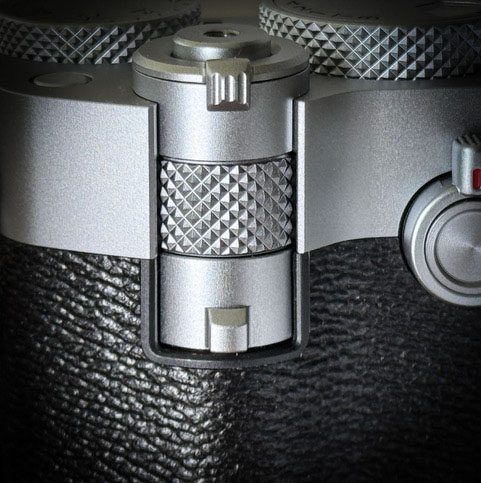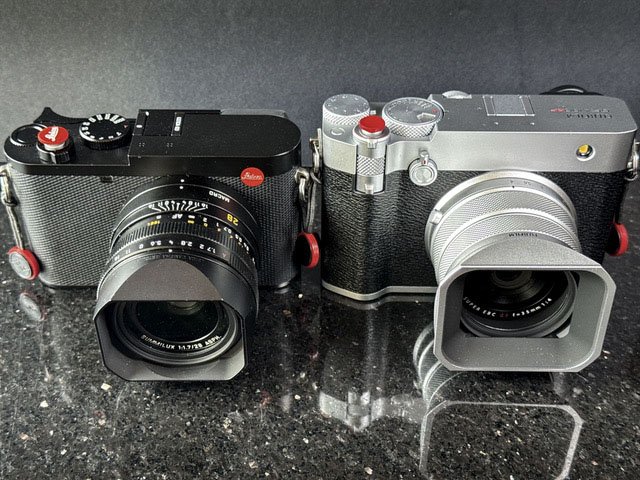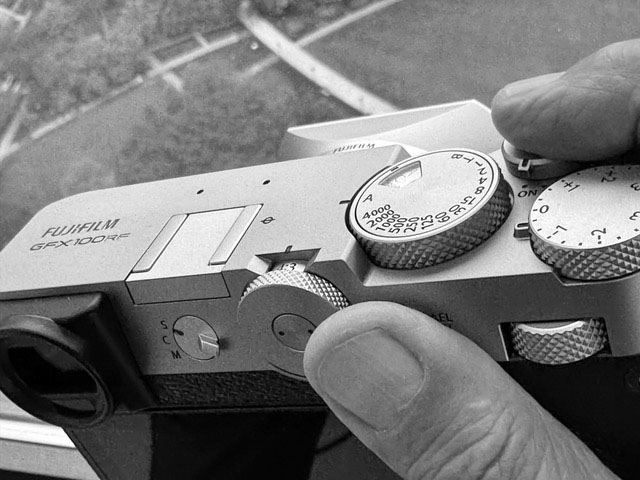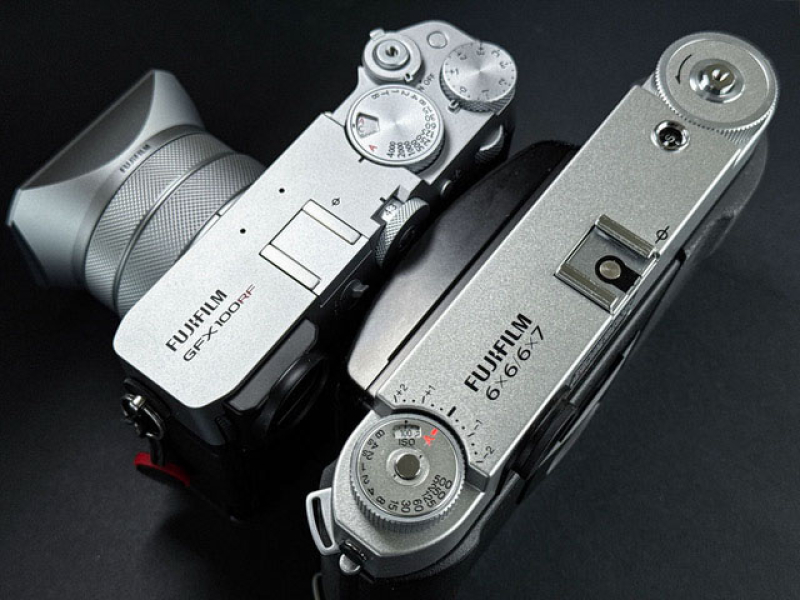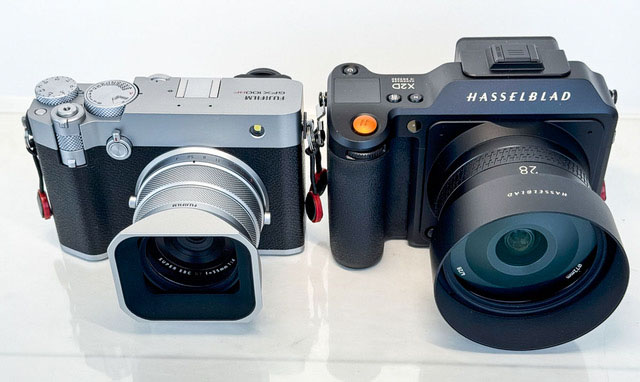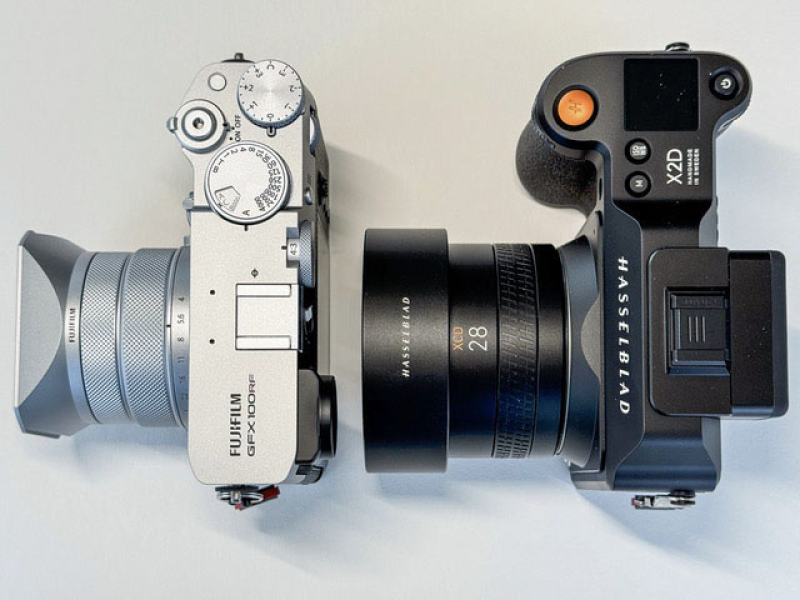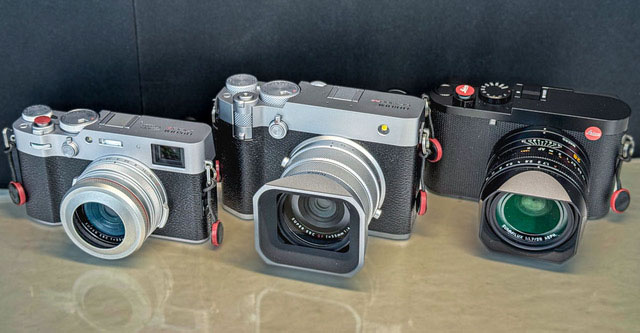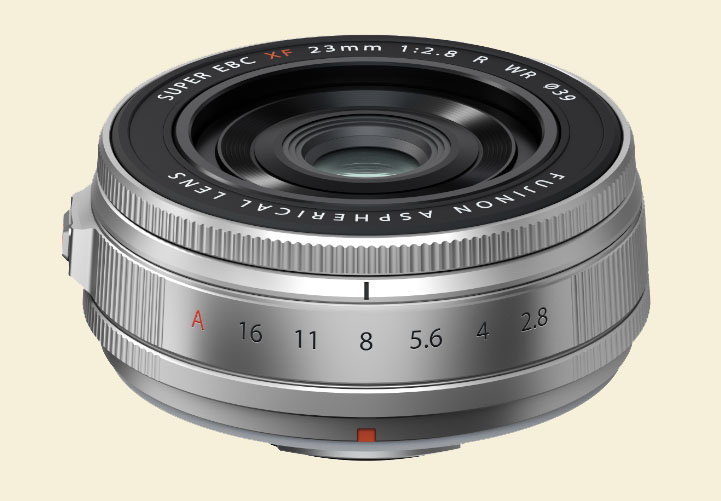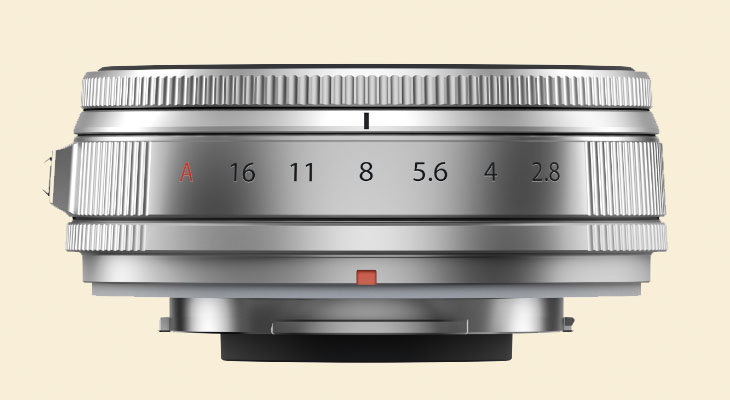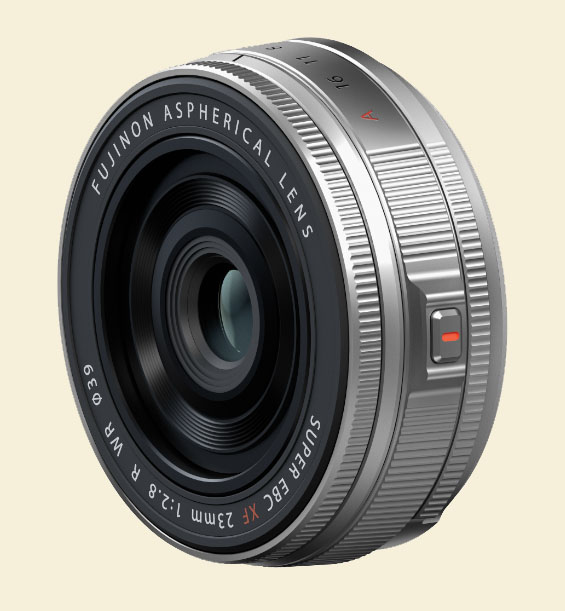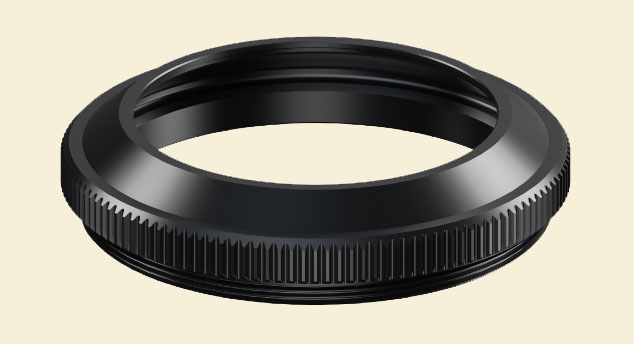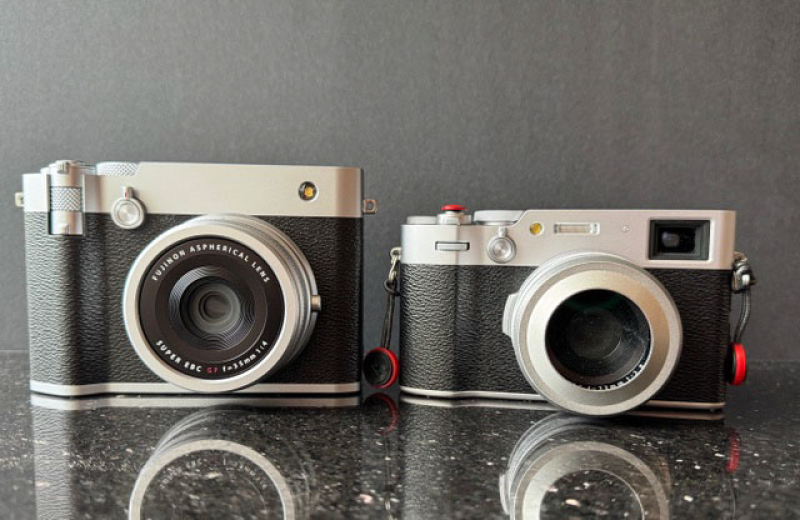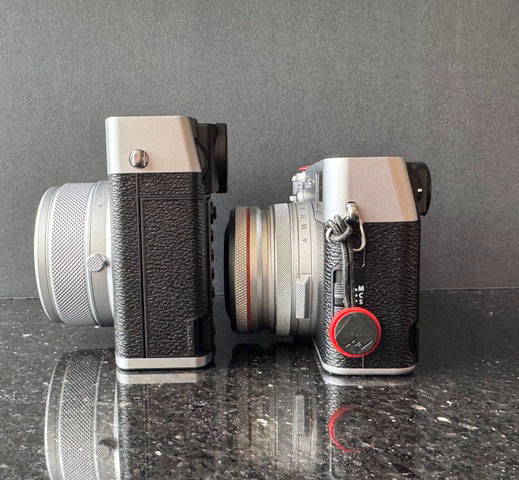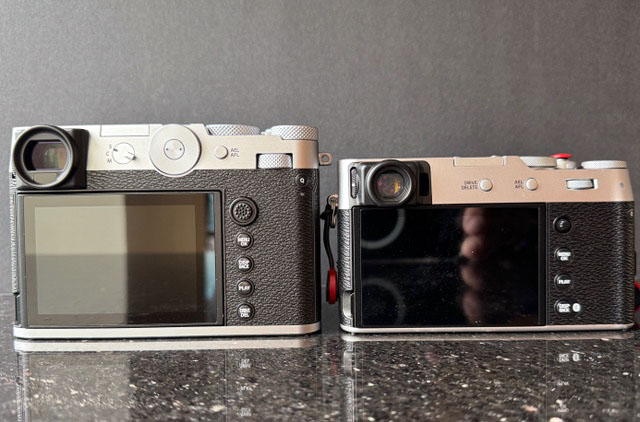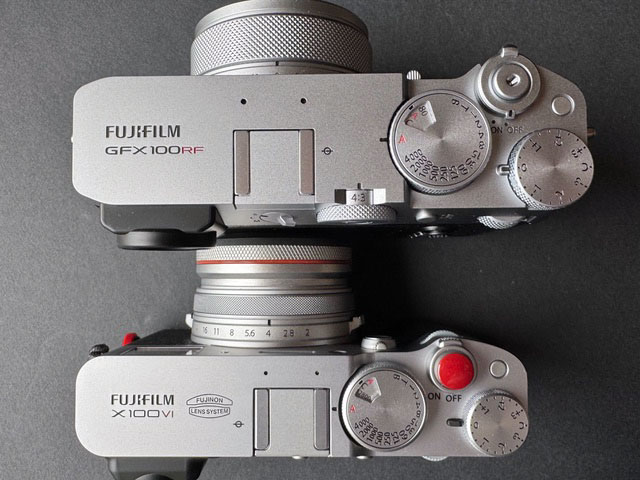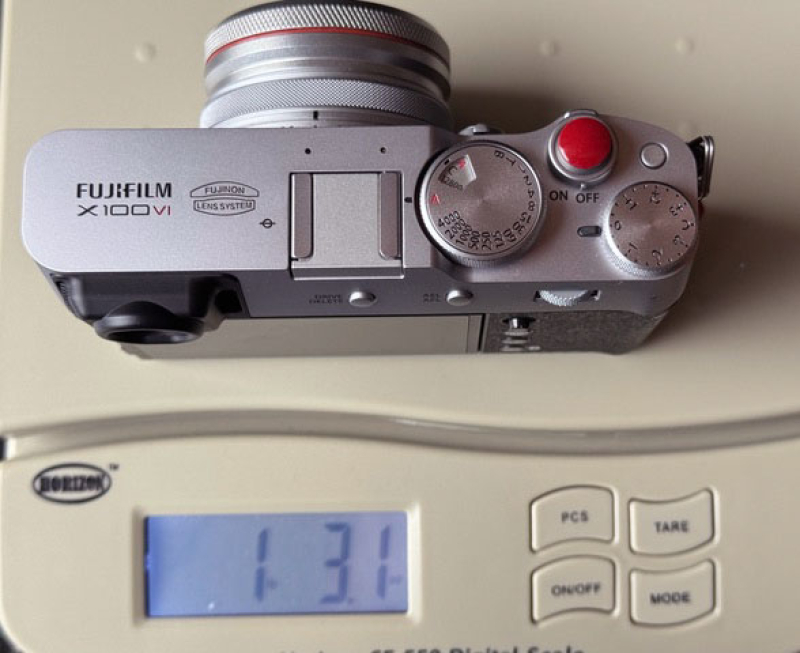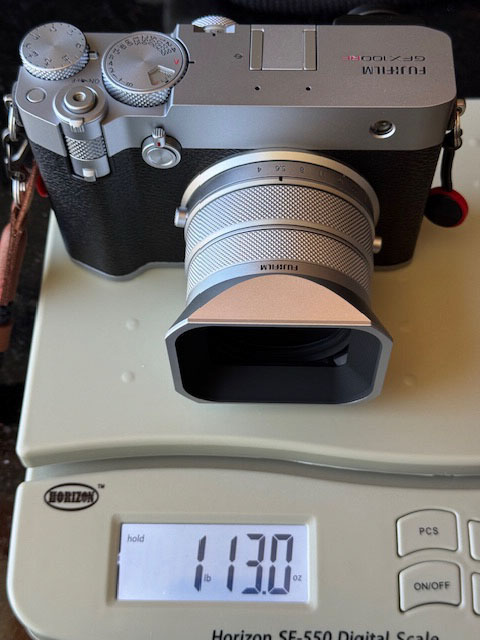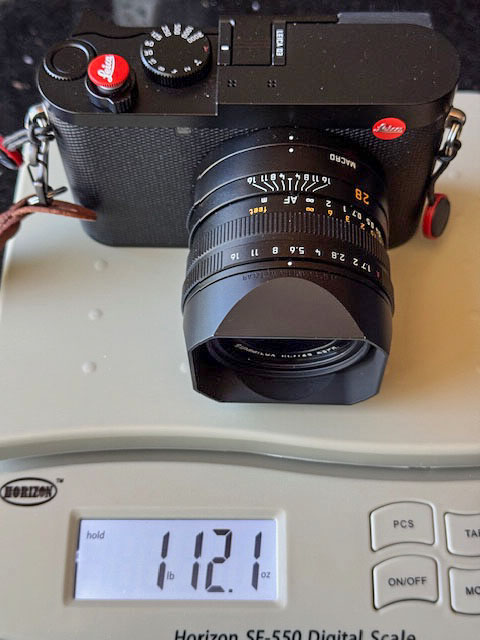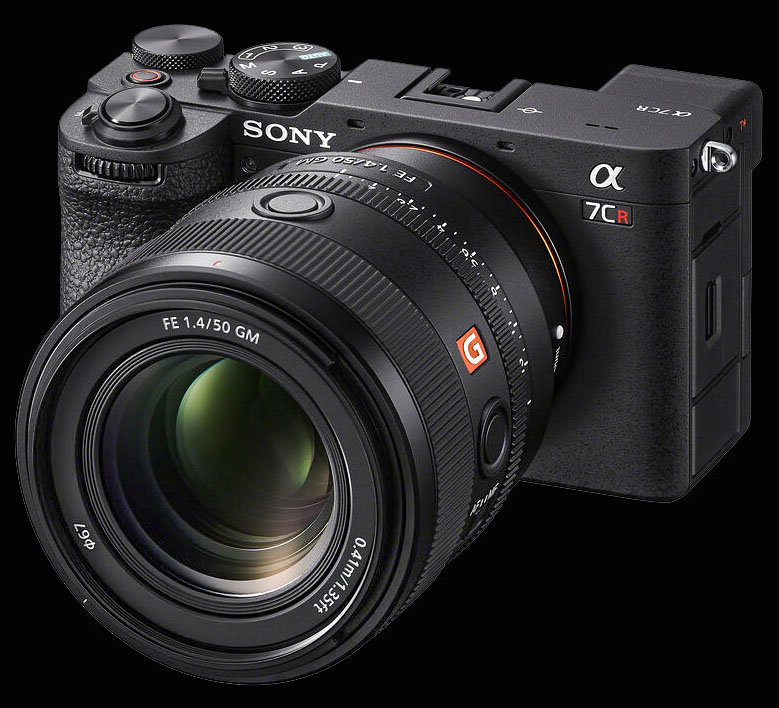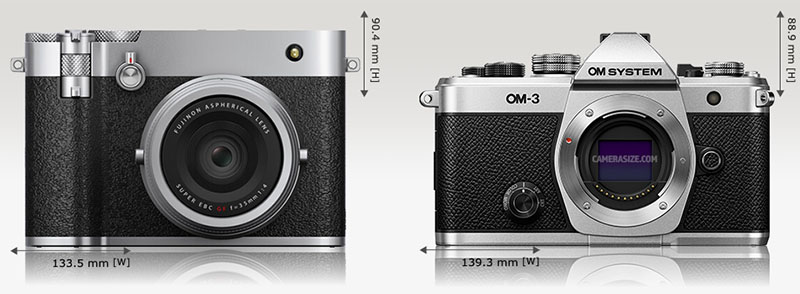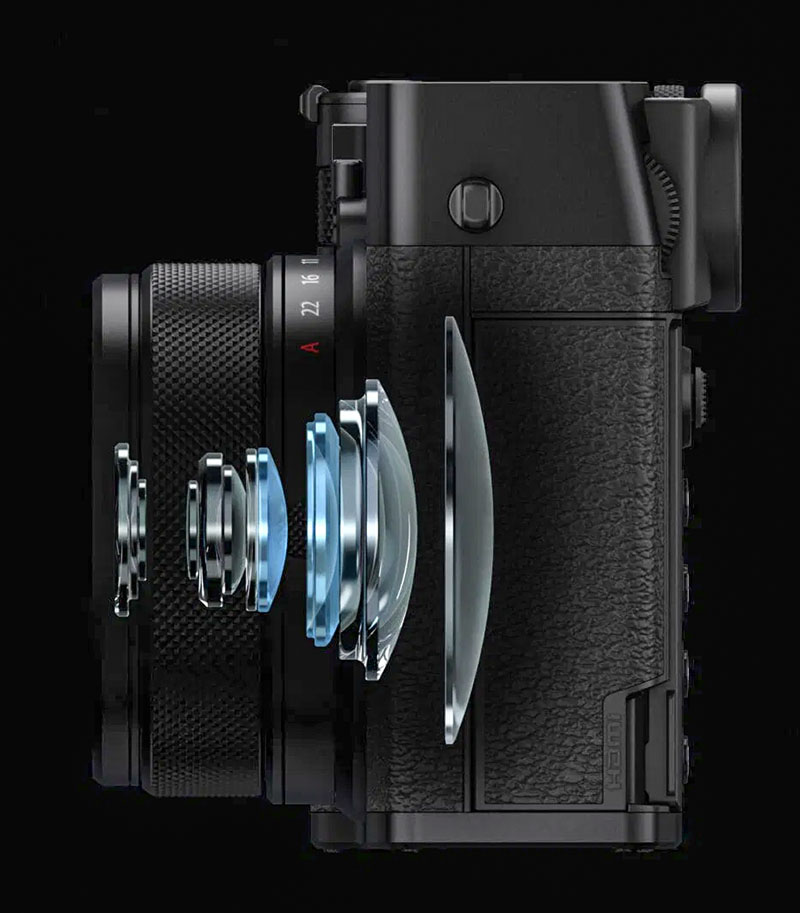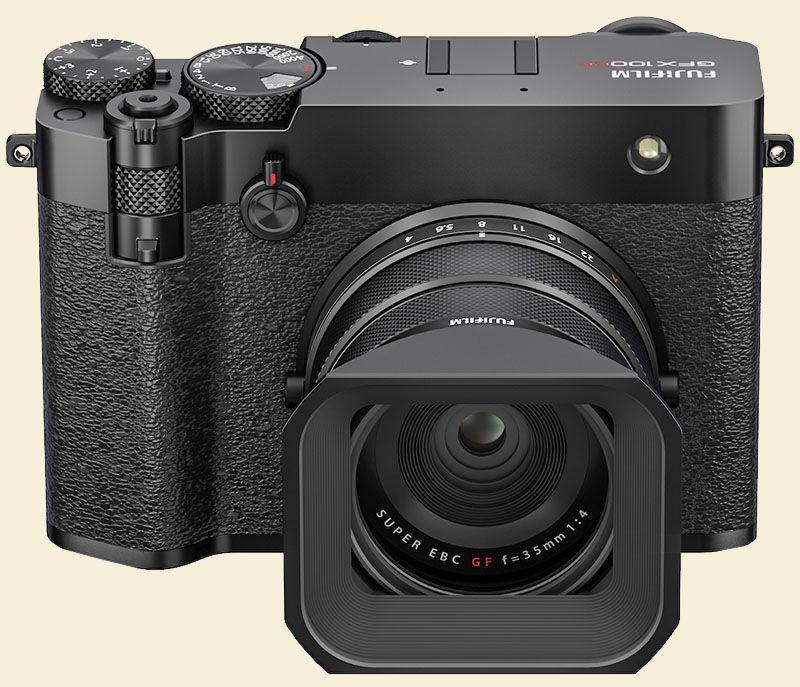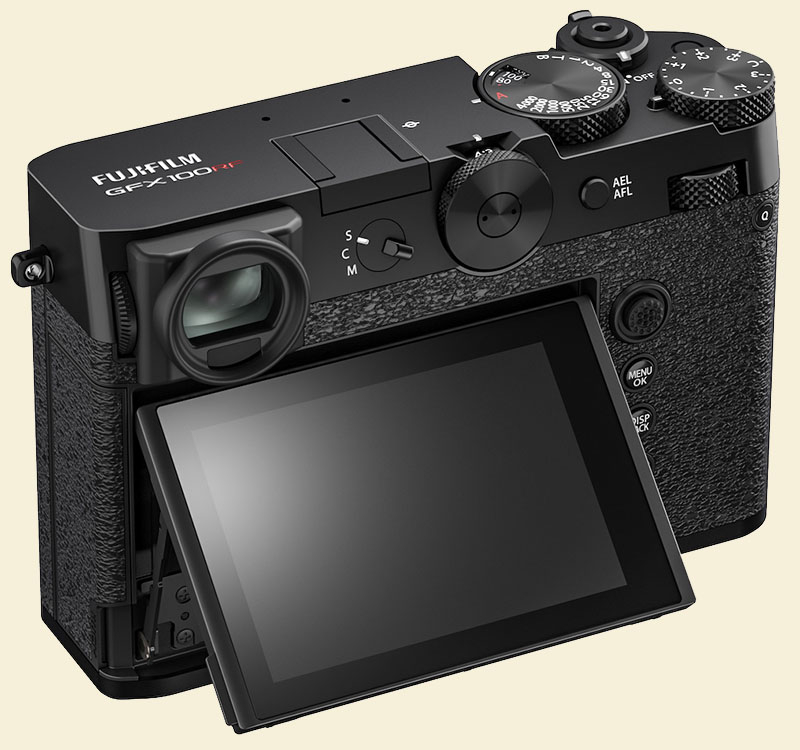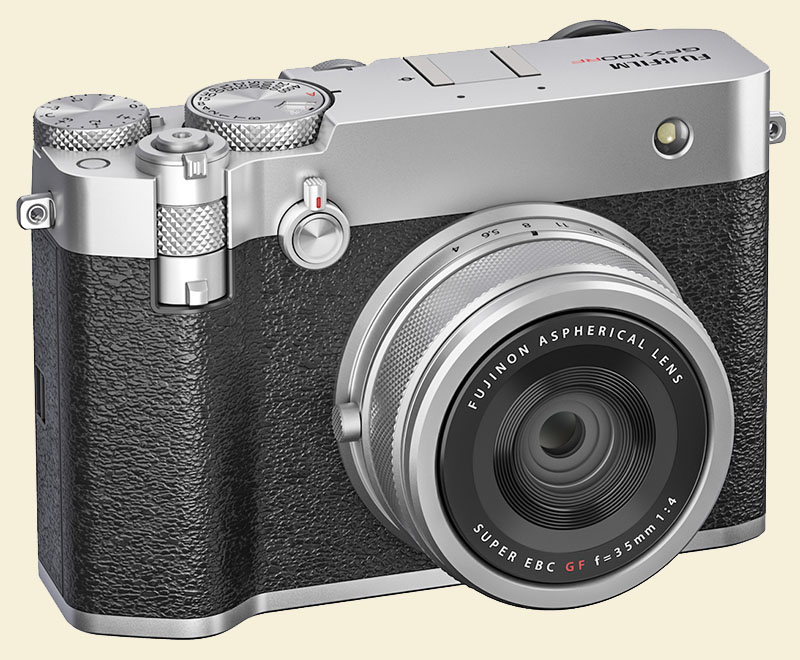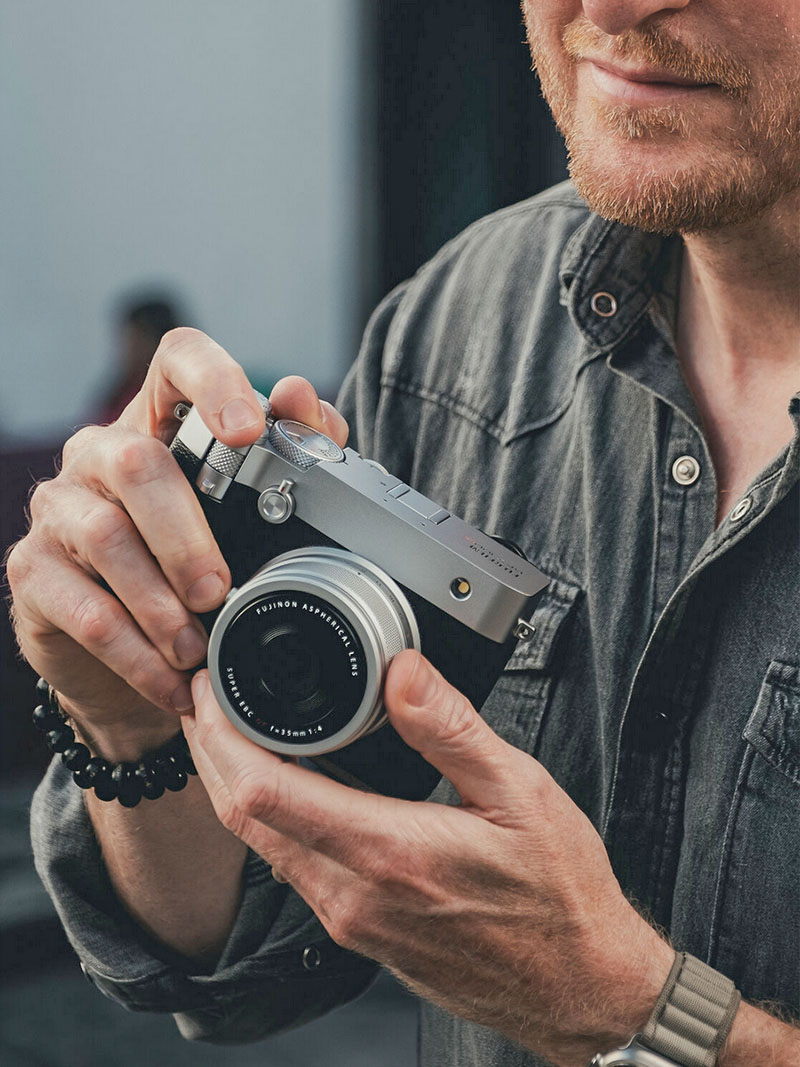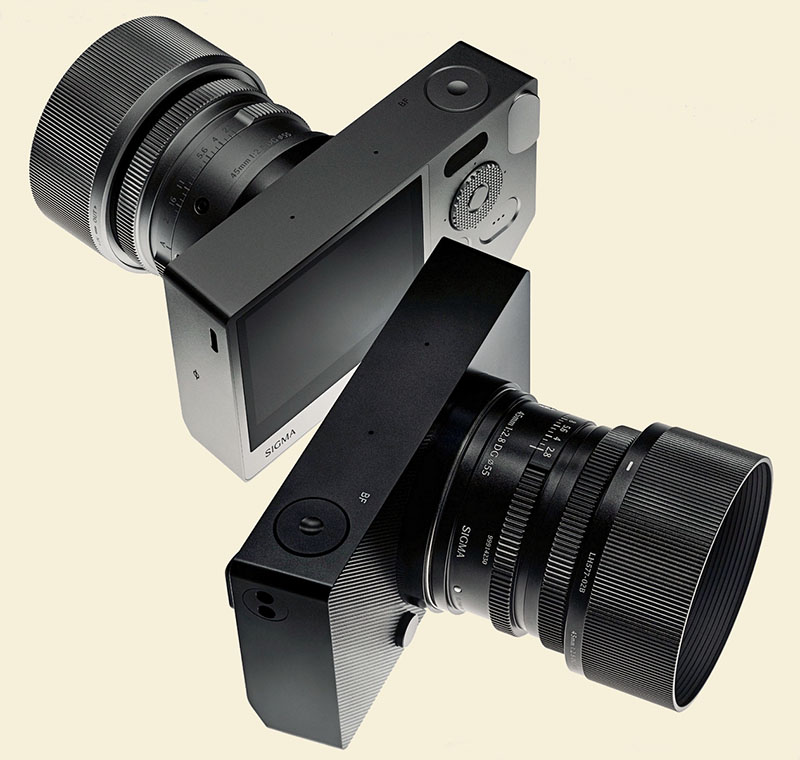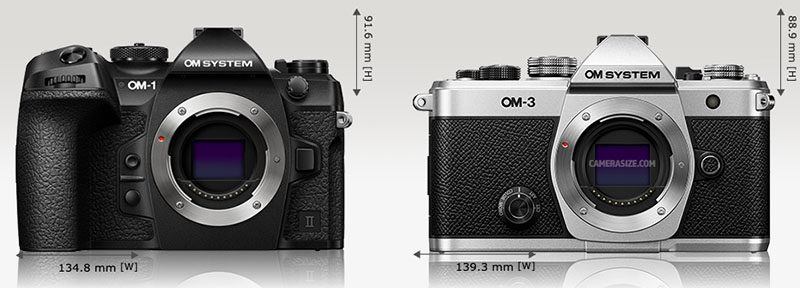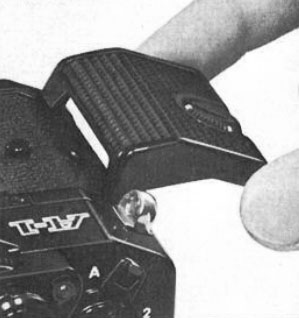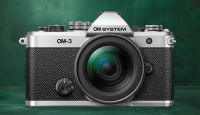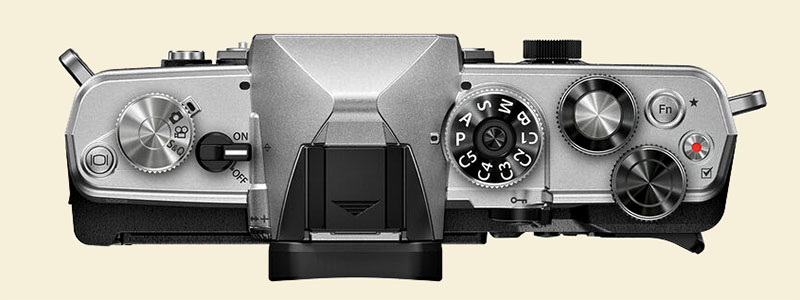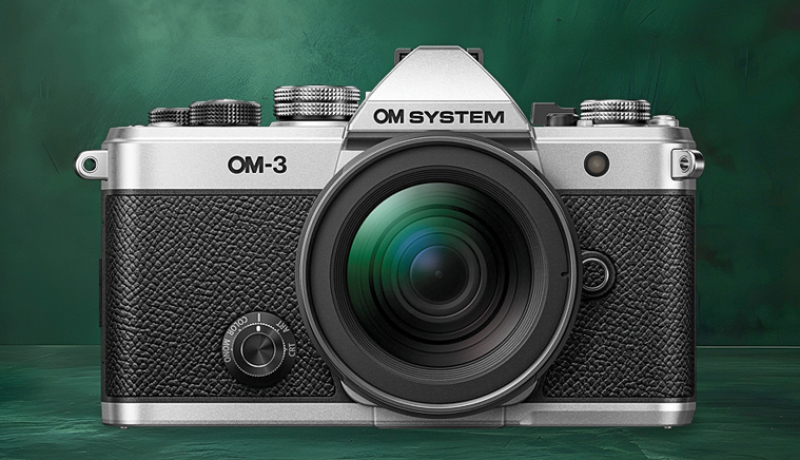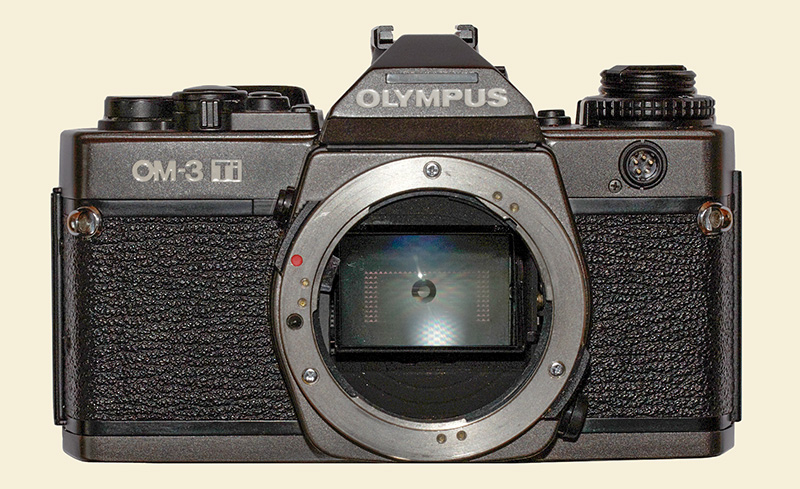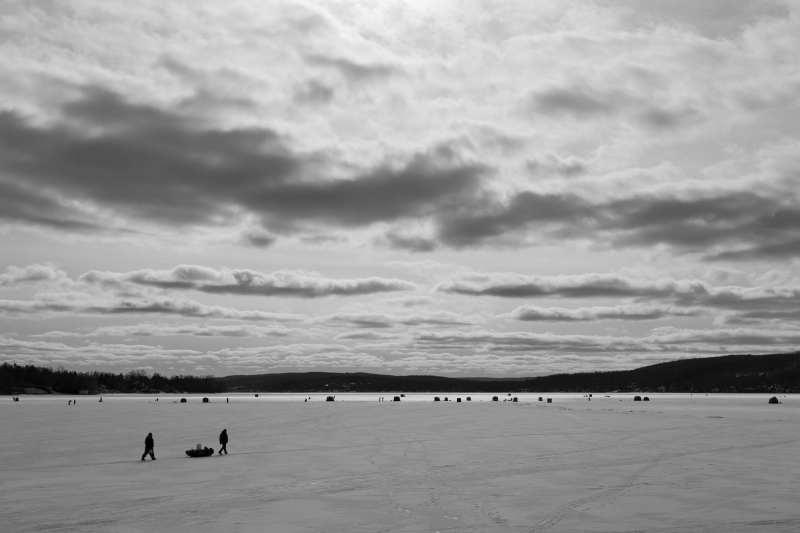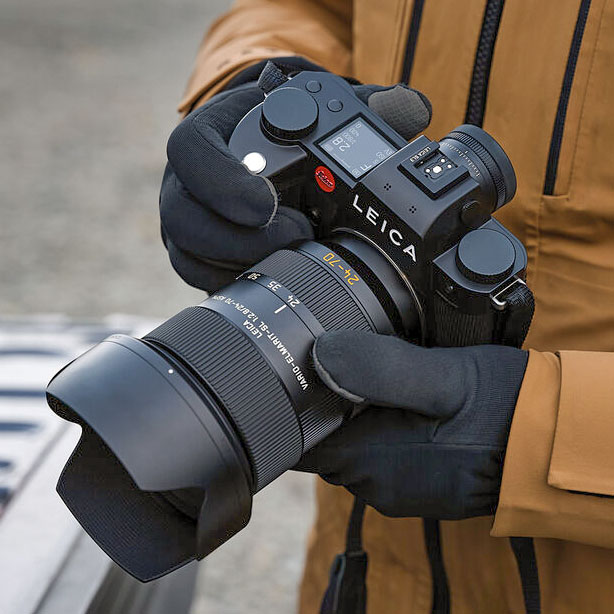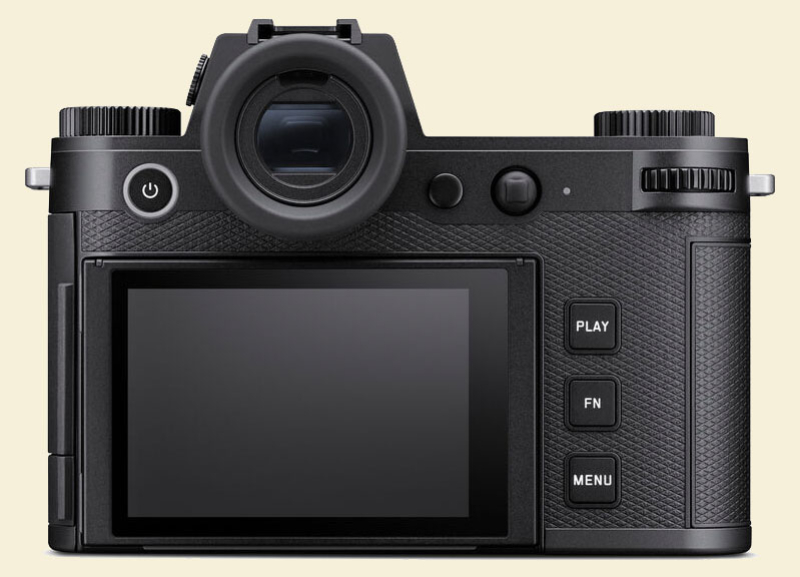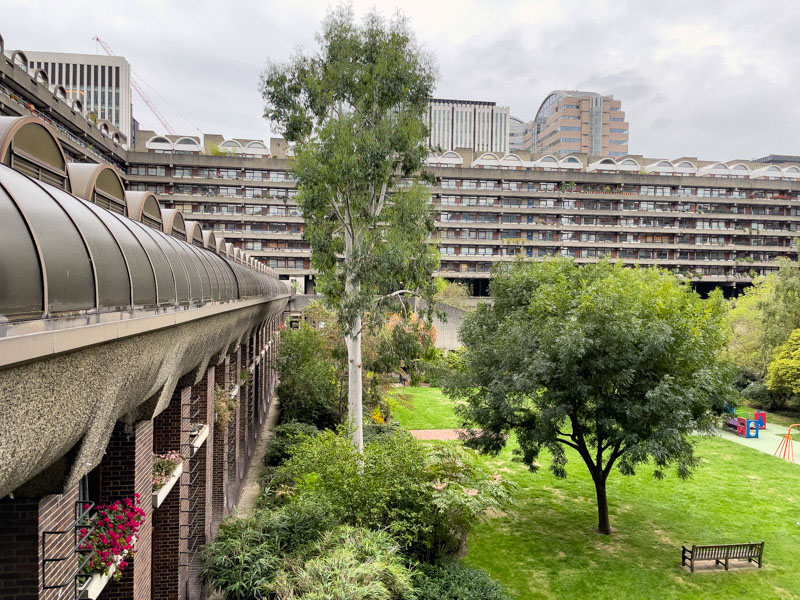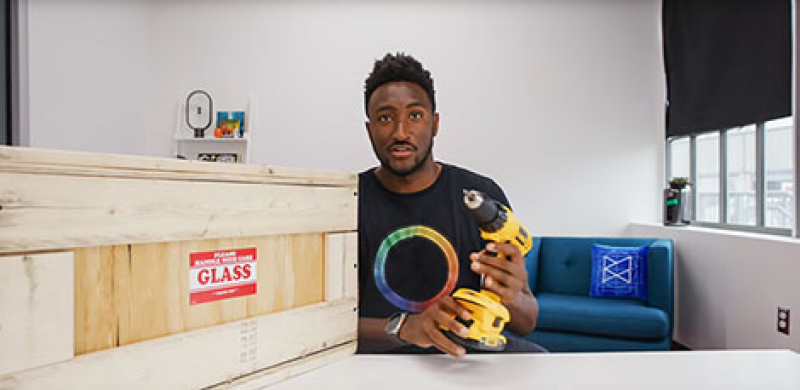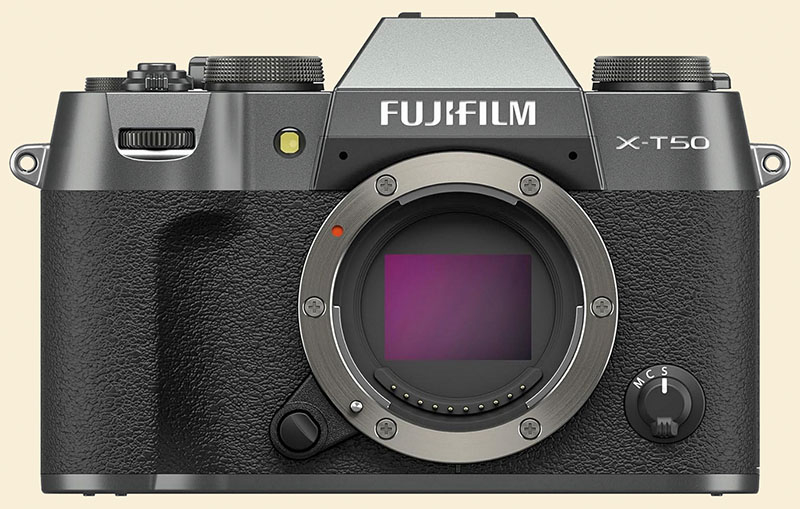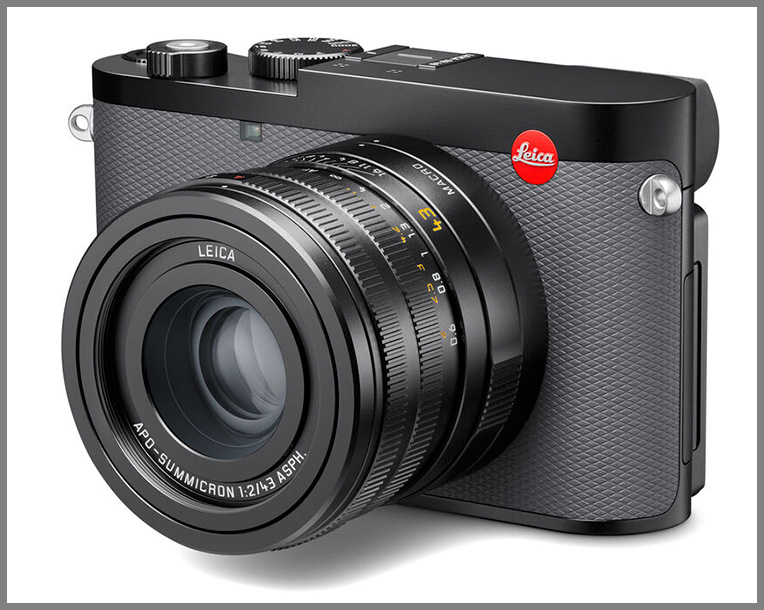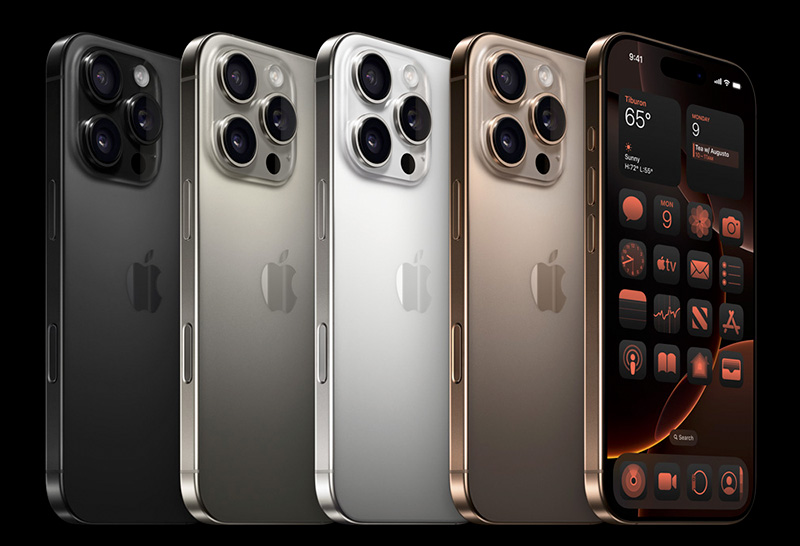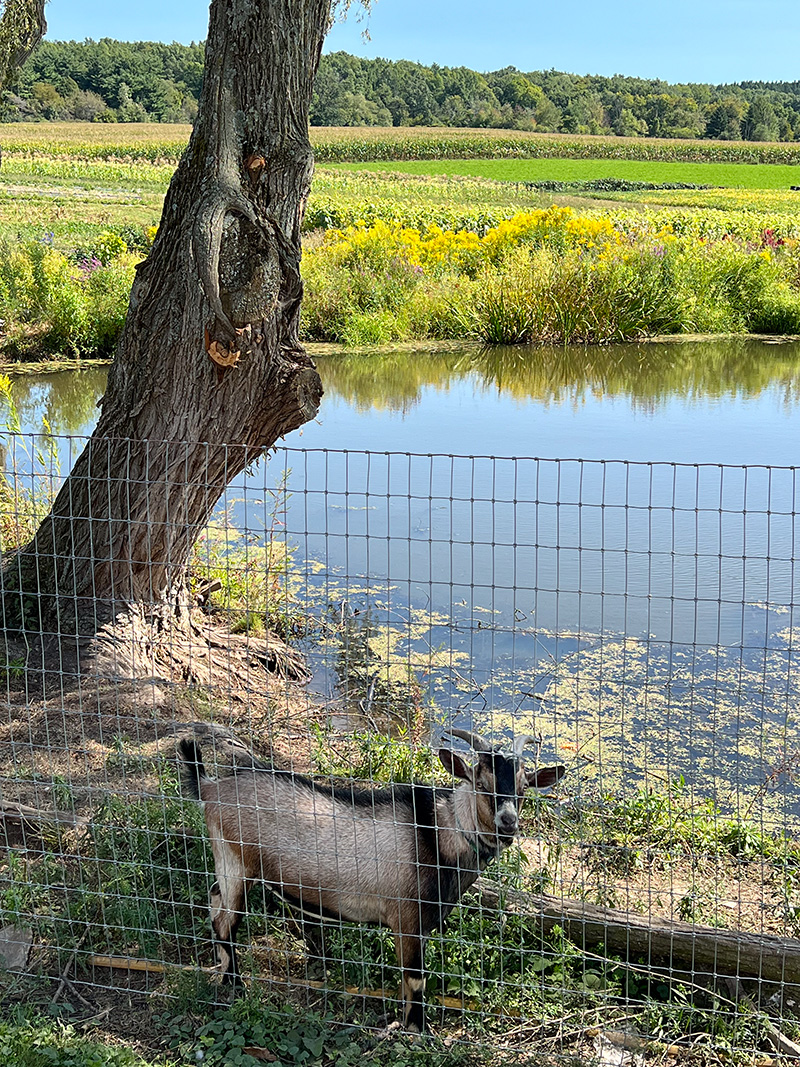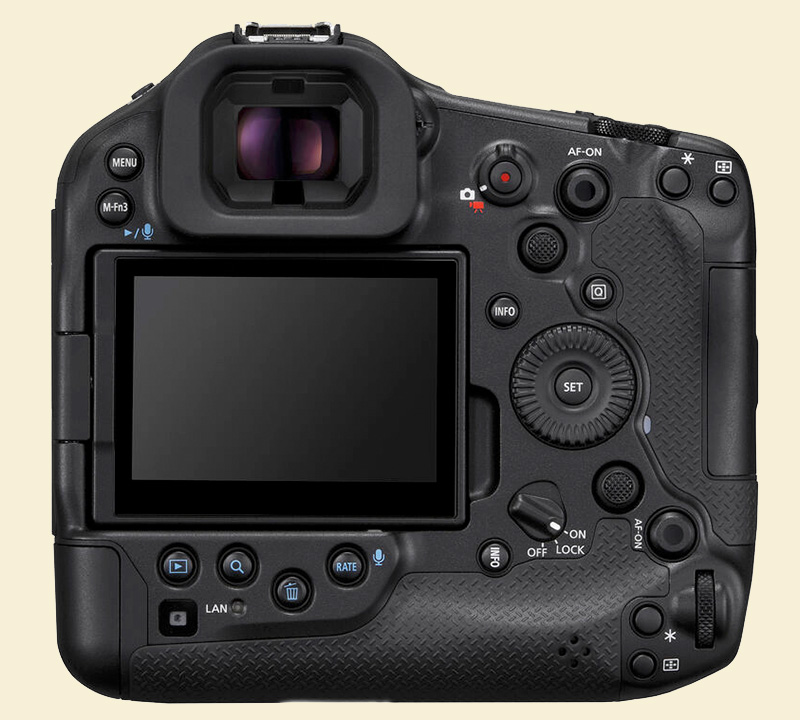Text and illustrations by Ken Tanaka
(Continued from Part I)
Notes and impressions
- The GFX100RF uses same NP-W235 battery as other current GFX cameras, as well as the X-T5. Note, however, that it does not come with a battery charger. (What'd you expect for $5,000?)
- File sizes and formats are the same as found on Fuji's GFX100s II. That is, they're quite large but normal for today's 100-MP medium-format-sensor cameras. For example, here are files recorded from the same scene in various in-camera formats:
Uncompressed raw: 200 MB
Compressed raw: 68 MB
Lossless raw: 112 MB
Super-Fine JPEG: 40 MB
Fine JPEG: 20 MB
- Autofocus on any medium-format digital camera today lags far behind the state-of-the-art "which eyelash do you want to follow on that gnat" tech that full-frame system users enjoy. That is, the GFX100RF's autofocus is basically the same as that of the GFX100s II; so-so. Definitely not best-suited for action. The old single-point technique will be your friend.
- Speaking of autofocus, the GFX100RF finally puts the focus mode selection switch in a saner place; on the back! (Unfortunately, this does not seem to be a prospectively permanent design choice. The newly-announced X-E5 features this switch in the usual obscure left-edge location.)
New sensibly-located focus mode switch!
- The Fujinon 35mm Aspherical ƒ/4 lens (28mm field of view in 35mm terms) is quite good, as you'd expect. It's sharp but can sometimes seem softish in the corners. I have not noticed significant falloff in the corners at ƒ/4. It has good contrast, good definition, and good flare resistance. I don’t think you’ll find much to complain about here.
- As a personal nitpick, the controls feel somewhat stiff to my hands. The dials feel just a bit hard to turn with my thumb and the joystick feels stiff and sharp to the touch. My thumb actually felt raw after a day of shooting. Your impression might be different.
- The GFX100RF, like Fuji’s other cameras, is designed to make the JPEG shooter feel right at home. A dedicated aspect ratio dial on the body's top-center edge, functionless when shooting raw, stands as a prime testament to that. As does the easily-accessed digital teleconverter lever that enables switching between various focal length frame crops. Fuji imagines that you're going to use a $5,000 medium-format camera to capture pre-cropped and pre-seasoned JPEG images. That's just fine of course. There's a great deal to recommend this shortened workflow for most avocational and personal work. But I wonder how many buyers plan to do that. It also seems somewhat at odds with the Capture One trial coupon included in the box.
Aspect ratio dial—only active during JPEG shooting
GFX100RF digital telephoto lever
So does the GFX100RF make sense?
Short answer: Not nearly as much as it could.
Fuji’s GFX100RF is a lovely camera that really wants to be your buddy in the same style as the X100 cameras. The in-hand feeling and control layouts of the cameras are largely the same. It’s thoughtfully designed, well-built and very consistent with Fuji’s other well-established, very successful camera models. There’s absolutely no question that a great many GFX100RF owners will be thrilled and use the camera productively for years. I heartily salute Fujifilms’s continuing design initiatives. They are true practical innovators who have persistently expanded and redefined photography for decades.
Unfortunately, to be honest—and I own all these cameras—the GFX100RF falls a bit short in value when measured against the small but established field of fixed-prime lens digital cameras. Yes, its 100-MP sensor gathers a great deal of data from that wide lens that can be severely cropped while retaining sufficient resolution for social media. (I call it "gillnet photography.") Maybe that represents value to you? But when the light gets low you're going to find it harder to capture sharp images with no IBIS and an ƒ/4 lens. A 100-MP medium-format sensor can be brutally honest and unforgiving of shake. Judged against alternatives, these shortcomings seem like miscalculations for a new camera aimed at the advanced amateur semi-pro market.
Frankly, for $5,000, and much less, there are better alternatives that can provide much stronger fixed-prime lens companion camera values. The first and best alternative that comes to my mind (from within Fujifilm's own stable) is the almighty X100 series of cameras. An X100 V or VI will give you the same retro gestalt, albeit at 40 MP, with a brighter (ƒ/2) lens, IBIS, tilting screen, same Fuji-style controls, etc. for a much lower price, even if inflated due to scarcity.
But if you’re already willing to spend $5,000 and really want the best image quality from a fixed-prime lens camera, why not spend just a bit more for a Leica Q3? It’s about the same size and weight as the GFX100RF and features a 60-MP full-frame sensor. With its excellent simple control system, IBIS, and a perhaps the best 28mm lens ever made (the 28mm ƒ/1.7 Summilux lens with a physical optical macro shift ring), the Q3 simply blows past the GFX100RF. Yes, a new Q3 will set you back over $6,700. But used, like-new Q3s are available at MPB and KEH for $5–6,000. It’s also worth noting that Leica cameras, in general, retain substantially higher resale values than more popular consumer brands. I believe I paid $5,900 for my Q3 when it was first introduced by Leica. Today I know I could sell it for nearly that same price on eBay. So, after all factors are considered, a Leica Q3 may very well be the stronger long-term value proposition for such a camera today.
Leica Q3 and Fujifilm GFX100RF
So should you consider buying the GFX100RF? It’s a seductive gadget with undeniable charms found only in the kinds of "classic" camera designs that Fujifilm has become well known for. It’s not really an exciting camera, but it can grow on you…like a companion. But it's also expensive. If you're in the market for a fixed-prime lens camera I highly suggest renting one for a week or two, if possible, before placing an order.
Cameras mentioned in this post:
Fujifilm GFX100RF (currently out of stock)
Fujifilm X100 VI (currently out of stock) (Amazon)
Fujifilm X-T5 (back-ordered) (Amazon)
Fujifilm GFX100s II (back-ordered)
Fujifilm X-E5 (available for pre-order)
Leica Q3 (or Leica Q3 43)
Original contents copyright 2025 by Kenneth Tanaka. All Rights Reserved. Links in this post may be to our affiliates; sales through affiliate links may benefit this site. As an Amazon Associate I earn from qualifying purchases. (To see all the comments, click on the "Comments" link below or on the title of this post.)
Featured Comments from:
Henry White: "Amused. The 'Veblen' Leica Q3 smoothly passes the non-Veblen medium-format Fuji GFX100RF for overall usability, quality, etc. And VALUE over time. With possibly the best 28mm lens in the world...
"From Ken: '... and a perhaps the best 28mm lens ever made (the 28mm ƒ/1.7 Summilux lens with a physical optical macro shift ring), the Q3 simply blows past the GFX100RF.' I think Ken got this all just right. I'm still on the Q2 and find it to be nearly perfect for wide angle (and 35mm) users. Value indeed."
Oharritz: "My impressions after two months' use:
"I got the GFX100RF one week after it was available. Before I bought it, I researched all available info on the net, watched all the (hyped) launch reviews, and checked all discussion forums I could find. For me, there were three things shaping my decision:
- Size and weight: I usually bring two cameras on a trip. One ILC (GFX50sII or Nikon Z7II) in a backpack with several lenses. And one smaller camera in a small shoulder bag. The size and weight of the GFX100RF fits this purpose perfectly, and so far I have been very happy with this setup.
- 28mm equivalent lens: I bought the GFX100RF mainly for landscapes. In the past five years, I have found that 28mm is my sweet spot for general landscape photography. And so far it has been perfect for this purpose. I found the lens on my copy is tack sharp, also in the corners, and even at ƒ/4. Could it be sharper? I don't know. But it's definitively sharp enough for me. Second use was for street photography. I also tend to like 28mm more and more for street. Additionally, the GFX100RF allows (extensive) cropping when shooting from the hip, in the cases where you're not getting the framing perfect.
- 100-MP GFX quality ‘medium’ format sensor: With my GFX50sII as a reference, I knew that it would have impressive image quality. So far, it has lived up to my expectations. And again, now in a small compact body with a great lens attached.
"My main complaint when using the GFX100RF for street is the false-positive Face/Eye detection. It will find the face/eye in the scene very quickly, but the recorded image is often sharp elsewhere (i.e., behind the person). I will say I have 30–40% false positives. This is in AFS mode. I have not yet tried to see if the success rate increases by using other modes.
"I also have a Nikon Z7II. In several cases, when I compared pictures, I preferred the image from GFX50sII, and now the GFX100RF. At times and in certain light conditions (i.e., sunsets) the GFX takes an image which is rendered with a remarkable tonality, something I do not see as impressively with the Nikon."
